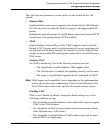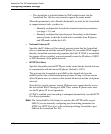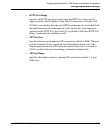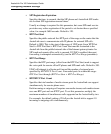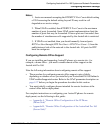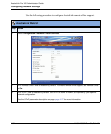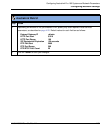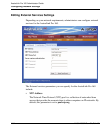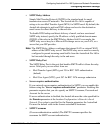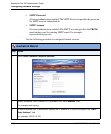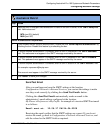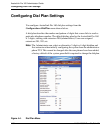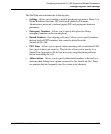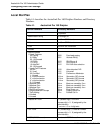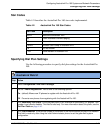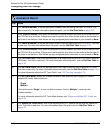
Configuring Network Settings
41-001190-02 Rev. 01, Rel. 1.2 4-35
Configuring AastraLink Pro 160 System and Network Parameters
•SMTP Relay Address
Simple Mail Transfer Protocol (SMTP) is the standard used for email
transmissions across IP networks. The AastraLink Pro 160 is capable of
acting as its own Mail Transfer Agent (MTA) for SMTP email. By default, the
AastraLink attempts to perform DNS lookups and resolve the destination
email server for direct delivery to the end user.
To disable DNS lookup and direct delivery of email, and use an external
SMTP relay instead, specify the IP address or fully qualified domain name
(FQDN) of the relay in the SMTP Relay Address field. For example, the
SMTP relay server may be a Microsoft Exchange server on your LAN, or a
server that your ISP provides.
Note: The SMTP Relay Address configures the internal LAN or external WAN
address of the SMTP relay server. The SMTP relay server must be correctly
configured to permit incoming email traffic from the AastraLink Pro 160 to
be forwarded through the relay to the end users.
• SMTP Relay Port
The SMTP Relay Port is the port that handles SMTP traffic to/from the relay
server. Valid ports you can select from are:
• Mail Transfer Agent (MTA), port 25 for RFC 2822 authentication
(default)
• Mail User Agent (MTU), port 587 for RFC 2476 message submission
• Server requires authentication
If your network server requires authentication for SMTP, you can enable this
feature using the “Server requires authentication” parameter. Enabling this
parameter requires that you also specify an SMTP Username, Password and
Account for the server.
If server authentication is disabled, the AastraLink uses the value specified for
the Domain parameter at the location Configuration->Network->Local
Network. If no value is specified for the Domain parameter, the AastraLink
Pro uses the default value in the format aastralink@ hostname.
• SMTP Username
(If server authentication enabled) The SMTP Username specifies the
username for SMTP account authentication.



